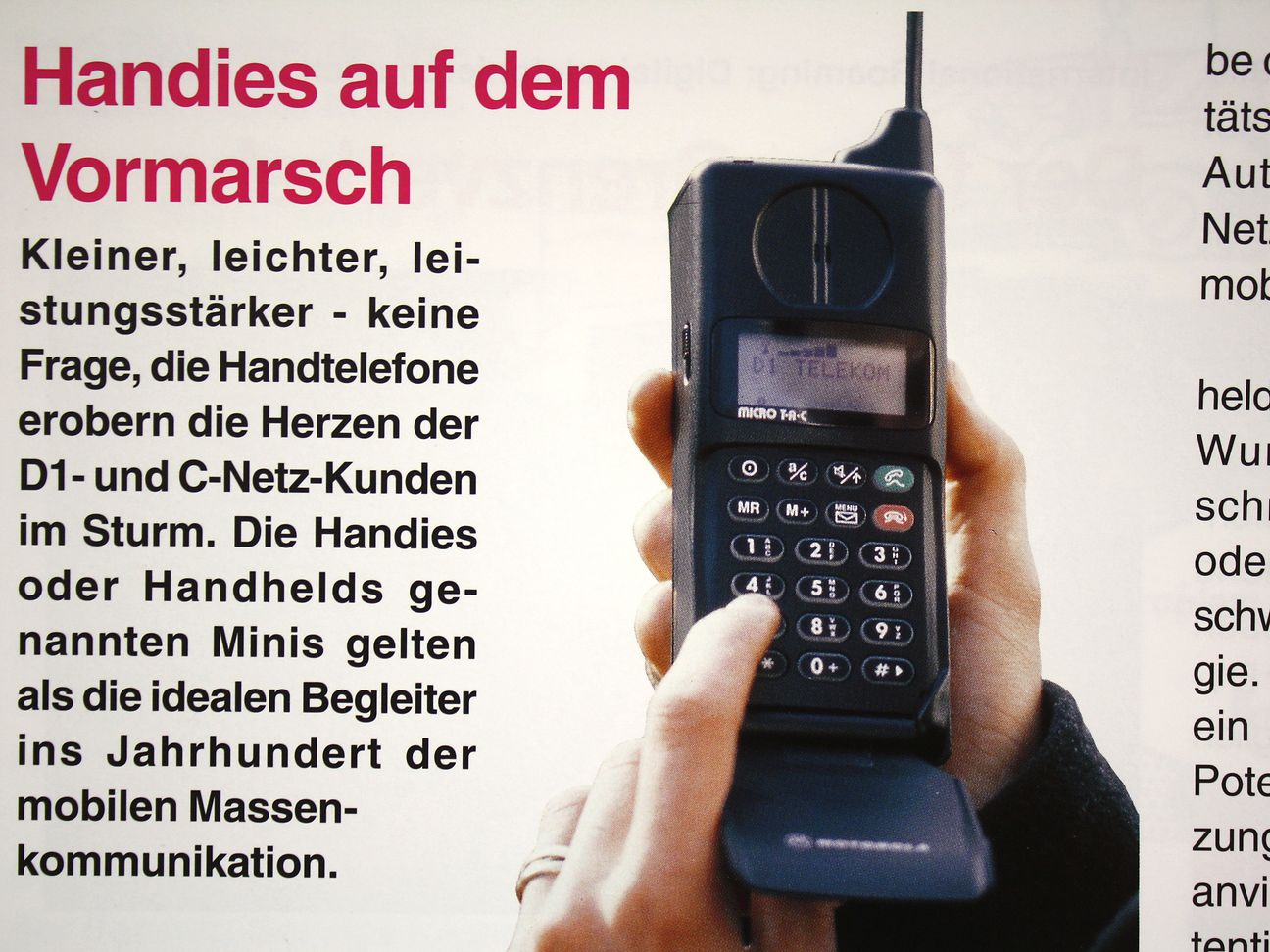

It's a quarter of a century since the former Deutsche Bundespost Telekom in Bonn celebrated the launch of the D1 network. We took the opportunity to look through the Deutsche Telekom archive.
If the online weather almanac is to be believed, the weather in Bonn on July 1, 1992 is cloudy with some rain. As the Maritim hotel clock strikes 11 a.m., Deutsche Telekom officially signals the launch of the brand new D1 network. In attendance: the then Federal Minister for Post and Communication, Christian Schwarz-Schilling, along with representatives from the service providers and the press. In an excerpt from the Deutsche Telekom press release, the network is described as being "based on a European standard [...] allowing an international reach and a high subscriber volume". "To coincide with the launch of D1, 10,000 devices from two manufacturers are available to customers." The new word for mobile phones in German – Handy – is not yet in use.
Deutsche Telekom's memory
A copy of the original press release can be found safely stowed away in a heavy-duty carton labeled 12734 in the basement of the Deutsche Telekom Headquarters in Bonn. This is where the company archive lives. "This archive is like Deutsche Telekom's memory," says Wolfgang Richter, the company archivist, who established the archive in 2005. Richter studied history in Hamburg before working as an archivist with various companies and at the Neuengamme concentration camp memorial. He was part of the team that set up Dresdner Bank's archives from scratch. When the Cologne city archive collapsed in March 2009, it was a sombre reminder for Richter of the importance of using special boxes to store paper archives. He volunteered his services to the clean-up operation as an archivist: "A lot of the documents that were in boxes escaped unscathed, but there were only fragments left of anything that had been stored loose."
The company archive keeps a record of the history and business activities of Deutsche Telekom. Catalogs, brochures, employee and customer magazines, newspapers, posters – even 7,500 films and much more are stored over some 1,400 meters of shelving. Added to this are 500,000 photos – prints, slides and negatives dating from 1990 through to the move to digital photography in 2003. The oldest piece in the archive is a newspaper from the Austrian-German Telegraph Union dating from 1856.
Wolfgang Richter opens up countless more cupboards and boxes for us on our impromptu search for information about the D1 launch, pulling out price lists, speeches, newspapers and catalogs from 1992. Snappy headlines leap out at us, such as "The future is here", or "The new language of mobile telephony". There are pictures of people on the streets with huge phones. And the European vision of working towards standard transmission technology across Europe for virtually unlimited mobile communication is clear to see.
Other interesting items surface, such as the Bundespost's financial report for 1987. It describes the "booming demand" triggered by D1's predecessor, the C-Netz network (52,000 subscribers as of the year end), and writes:
"In order to meet the high demand for wireless telephones in the long term, a fully digital system technology is being developed jointly in Europe for a single European radio telephony service that will work in the 900 MHz range as the D-Netz network."
And, of course, there are telephones themselves. Wolfgang Richter shows us a small selection of equipment from three centuries of telecommunications history, including the "Portable 314" available at the time of the D1 launch. "Pieces like these are really the domain of the museums for communication," he says. For more information, visit www.museumsstiftung.de.
We are struck by how often the German word for mobile phone, Handy, is preceded by the phrase "so-called". For a long time, it seemed unclear which word was right – "handheld" was also used for a time, for example in Deutsche Telekom's expo magazine Fairline in March 1994.
The new D-Netz network was also accompanied by plenty of press coverage, including a multi-page pull-out by Deutsche Telekom in the 23/92 issue of trade magazine Funkschau. The company was also very proud of the construction work that went into installing the network. Like the highest ever workplace for the Deutsche Telekom technicians: the Zugspitze mountain (Fairline, March 1994).
Our look back at the D1 launch is just one of many inquiries Wolfgang Richter receives about the history of Deutsche Telekom. The research service provided by the company archive is primarily there for Deutsche Telekom colleagues. It could be anything from adverts for cheaper evening rates from the 1980s to statistics on the network build-out or photos from the first Deutsche Telekom shops. The information requested isn't always available, but Richter will help where he can and often has advice on other collections or museums that might be able to help. He also researches at least two different sources wherever possible, just to make sure everything is bulletproof. A historian through and through.







